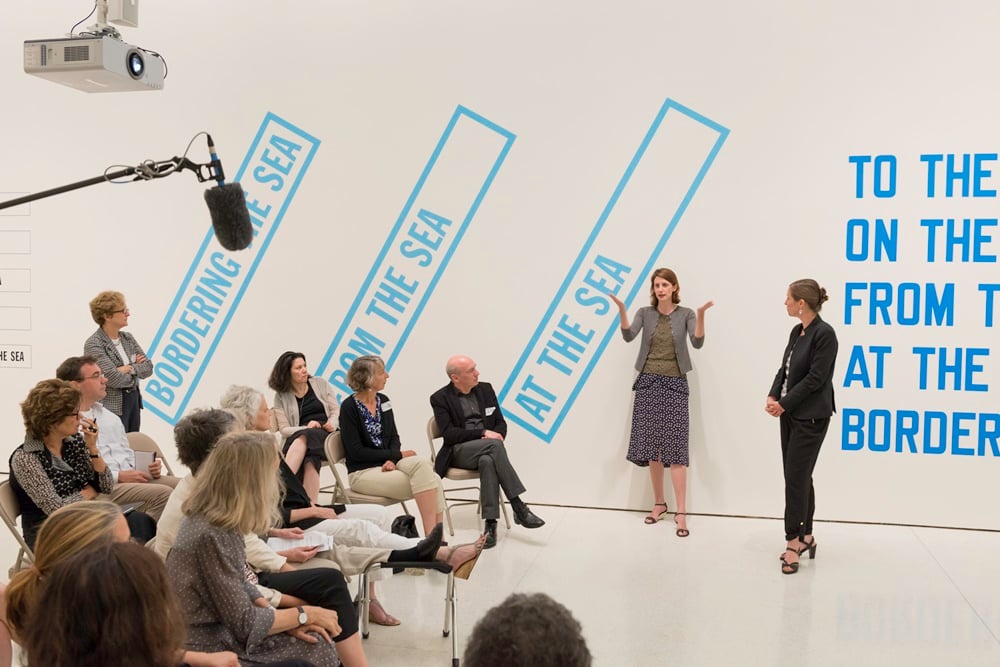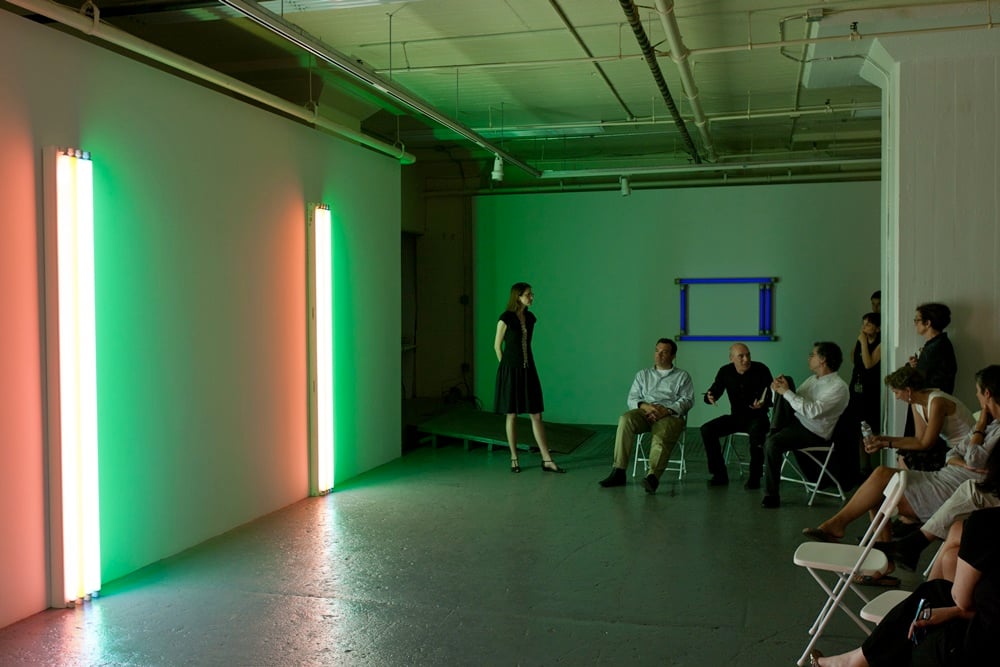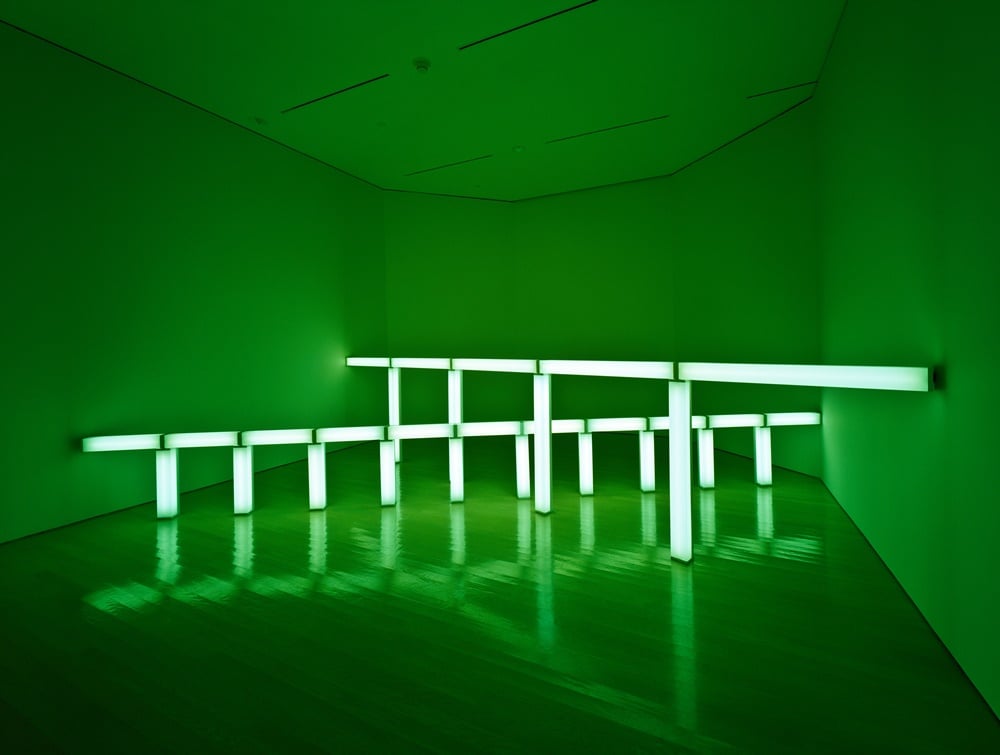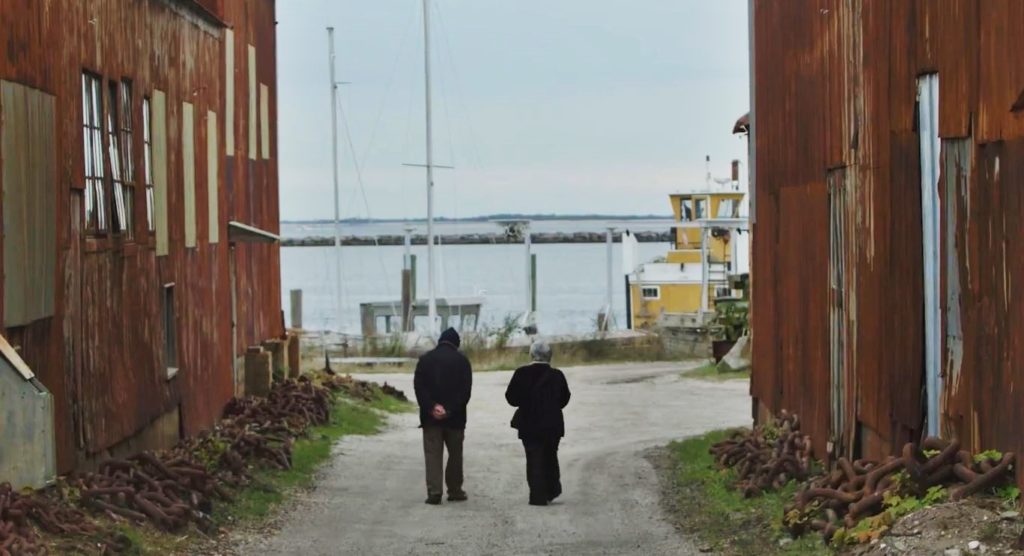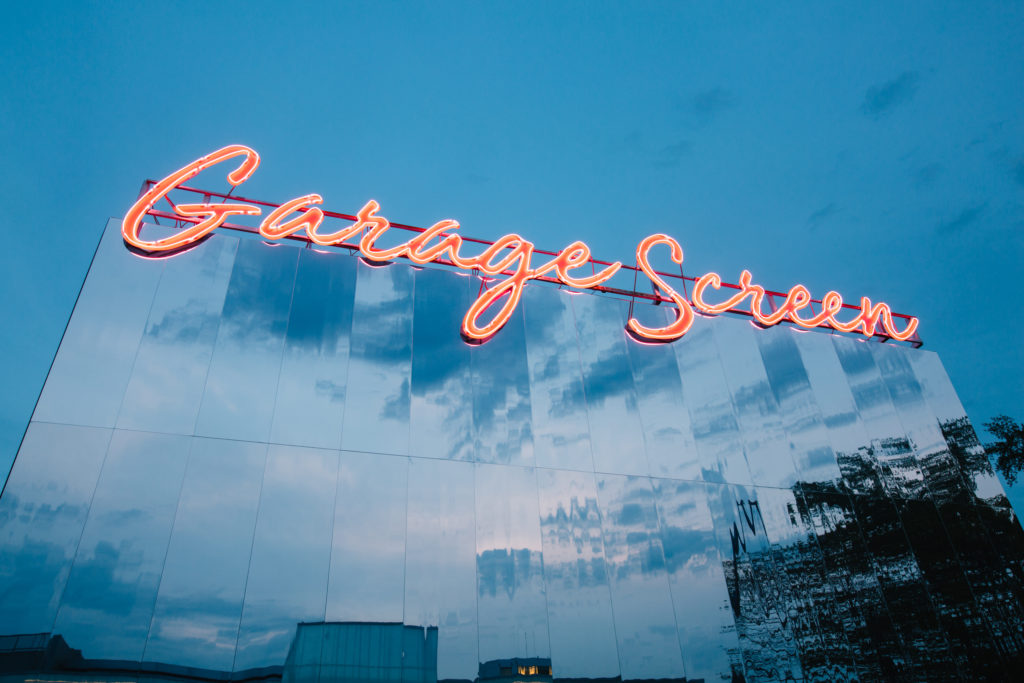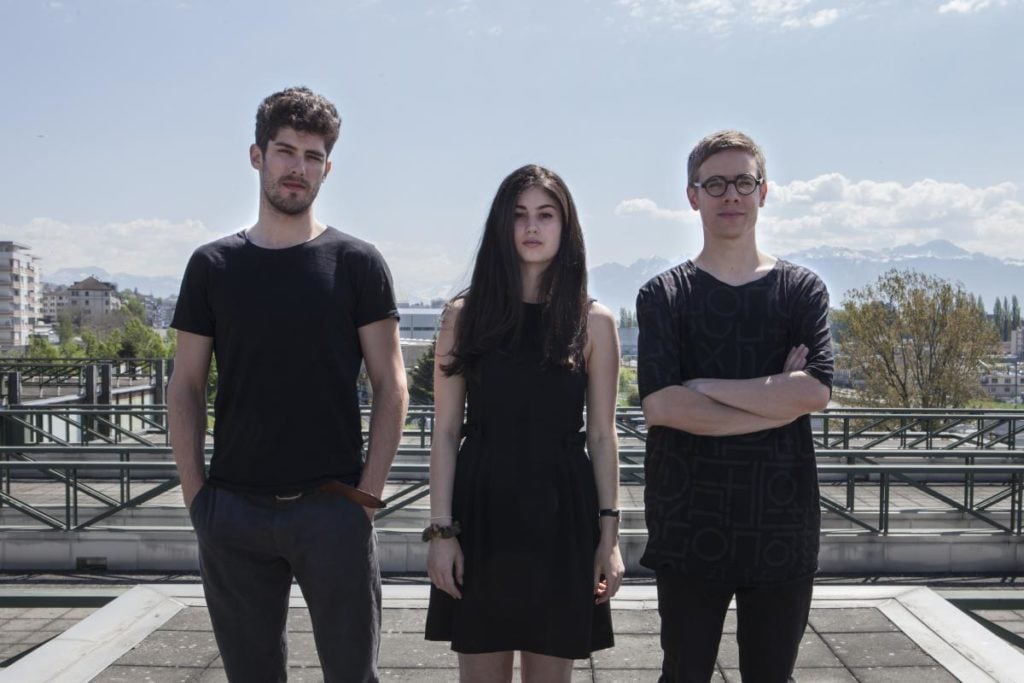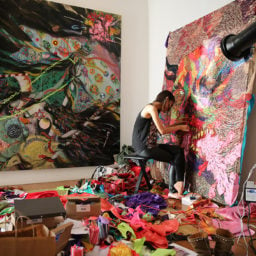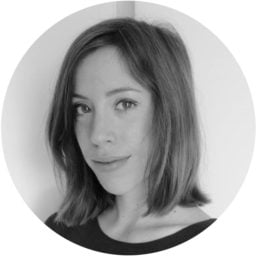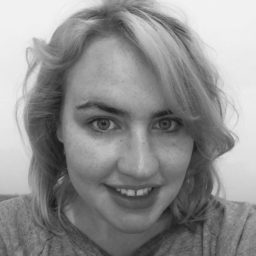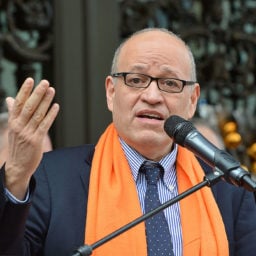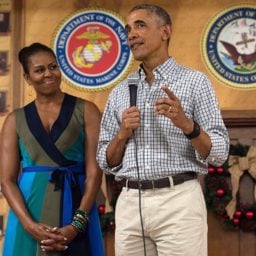For artists looking to bolster their CVs and networks, residencies can be the perfect setup, providing studio spaces, stimulating contexts, and contact with like-minded peers and curators and dealers that could strengthen their networks and advance their careers.
But as artist residencies proliferate, the quality of the experiences and the conditions they offer vary, making it difficult to discriminate where the true gems lie.
In search of the best opportunities that can be found in the European continent, artnet News has reached out to get the opinion of seasoned experts. These include Turner Prize-winning artist Laure Prouvost; Berlin’s KW curator Anna Gritz; DRAF London director and chief curator Vincent Honoré; artist Salomé Lamas; independent curator João Laia; and Institute of Things to Come curator Valerio del Baglivo.
The Swankiest
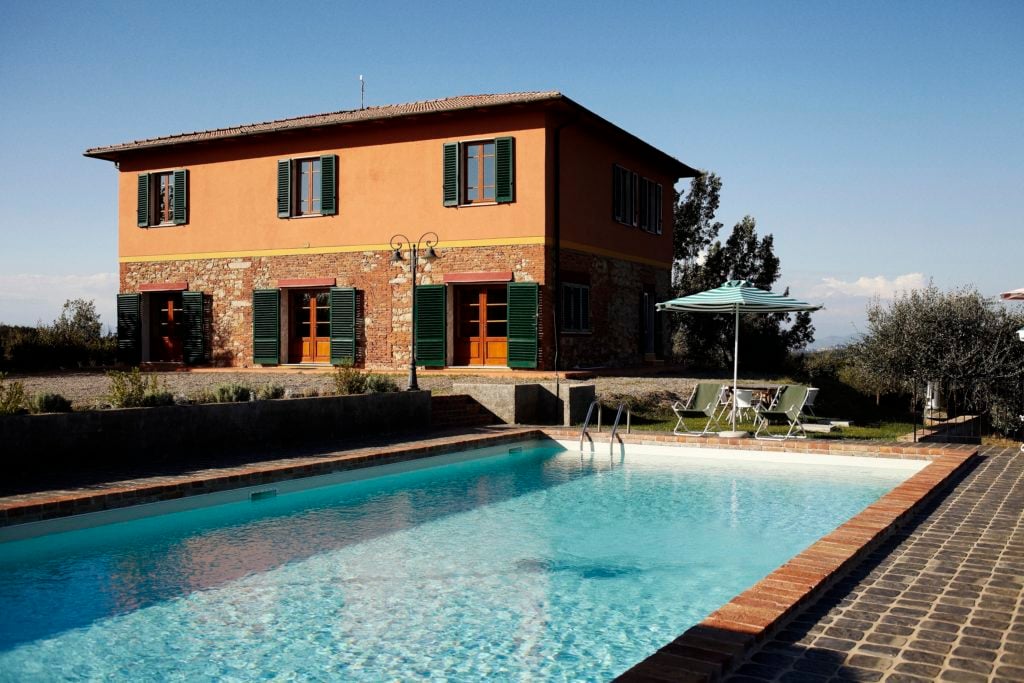
Villa Lena. Photo Coke Bartrina, courtesy Villa Lena Foundation.
The Villa Lena Foundation residency runs from April to October each year in the heart of the wild Tuscan countryside. The program offers one- or two-month stays with onsite accommodation in its 19th-century villa, and studio spaces up to 120 square meters. Residents are not paid a stipend, but the stunning location and the company of top artists (Sam Falls and Nina Beier are among this year’s residents) are what make Villa Lena so desirable.
Offering residencies that range from 3 to 12 months, Schloss Solitude is a dream gig, sited in a Rococo-style palace on the outskirts of Stuttgart that was constructed in 1764-69 as a hunting retreat for Duke Charles Eugene. Fellowships for residents include a live-work space, monthly stipend of €1,150, and travel expenses. The Akademie also offers a number of other perks, including transport of materials to and from Stuttgart; medical insurance for foreigners; and subsidies to buy materials and promote projects.
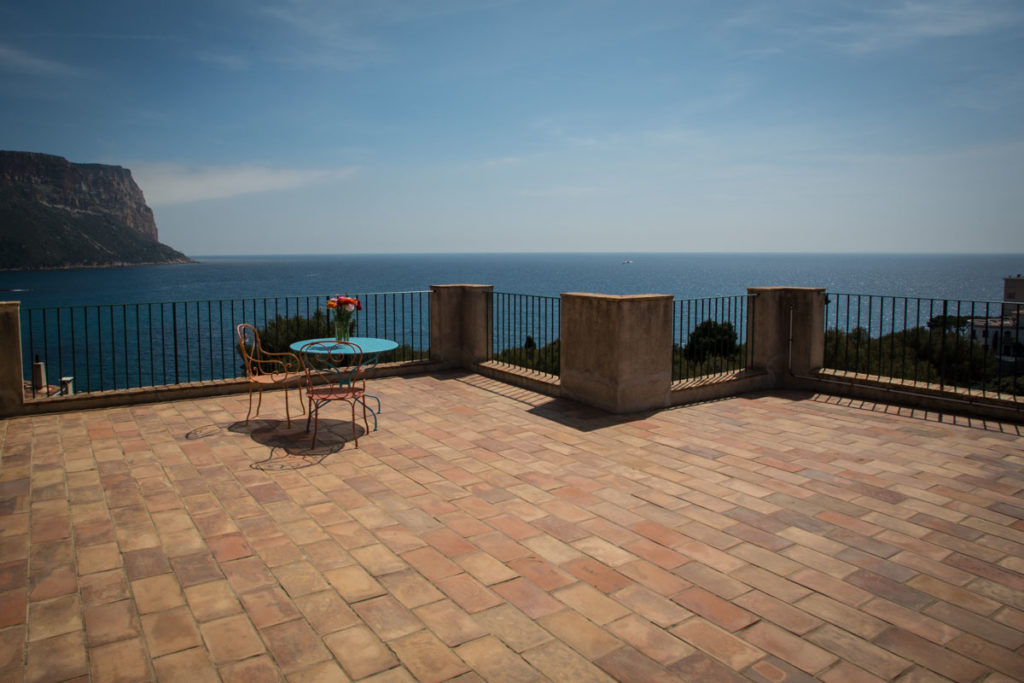
Camargo Foundation. Image courtesy @camargofoundation via Facebook.
The Camargo Foundation’s Core Program offers its residents $250 per week (€210) and houses them in a stunning location in the south of France, overlooking the Port de Cassis. Running eight-week residencies in the fall, with longer stays available in the spring (six, eight, or eleven weeks), food and travel are covered and children or partners can accompany the artist, thinker, or scholar who is chosen among the 18 yearly fellows.
The Spanish institution, located in the beautiful coastal town of San Sebastian in Basque country, offers a number of interesting residencies for artists and curators. The residencies that focus on artistic research projects will appeal to those seeking to allocate time, space, and funds to develop and formalize ideas. Lasting one to three months, the residency includes a monthly stipend of €1,000, medical insurance for foreigners, travel expenses, accommodation and studio space, a €4,000 research grant, and a production budget of up to €25,000.
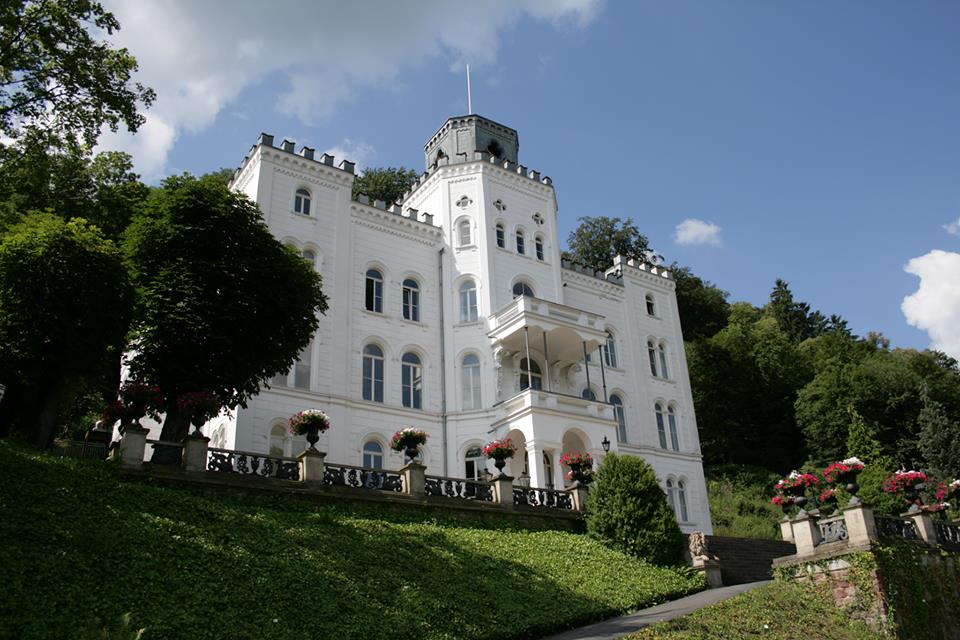
Künstlerhaus Schloss Balmoral, courtesy @KuenstlerhausSchlossBalmoral via Facebook.
Residents of Schloss Balmoral get to live in a three-story Italian Renaissance villa situated in the historical spa town of Bad Ems. Two three-month and four nine-month residential fellowships are offered to international visual artists, as well as one nine-month fellowship for a German- and English-speaking curator. The lucky fellows receive accommodation and a €1,400 monthly stipend. What’s unique about this residency is that the fellowships are offered in just one artistic genre or theme each year.
The Hardest to Get Into
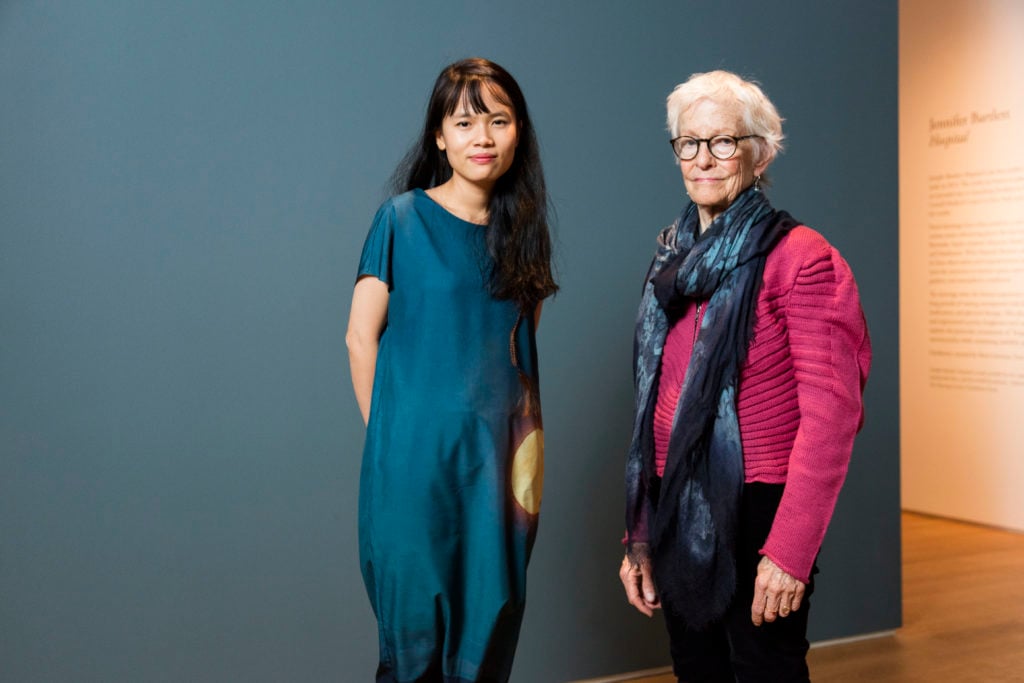
Visual arts protégée Thao-Nguyen Phan and mentor Joan Jonas in New York. Photo: ©Rolex/Robert Wright.
This prestigious program in Switzerland is nomination-only, and gifted young artists have to pass the approval of seven different panels before being matched with top artists (Joan Jonas is among this year’s mentors) for a year-long one-to-one mentoring relationship. Each protégé receives a grant of CHF 25,000 (€22,000), as well as travel and major expenses. An additional CHF 25,000 (€22,000) is also available to each protégé to create a new work after the year is over.
The Bellagio Arts & Literary Arts residency is for established composers, writers, playwrights, poets, video/filmmakers, dancers, musicians, and visual artists. They now hold an annual open call for proposals (the next one opens in October) that align with the Rockefeller Foundation’s philanthropic focuses. Up to 120 residents are housed on a 50-acre property on the shores of Lake Como, for stays up to a month.
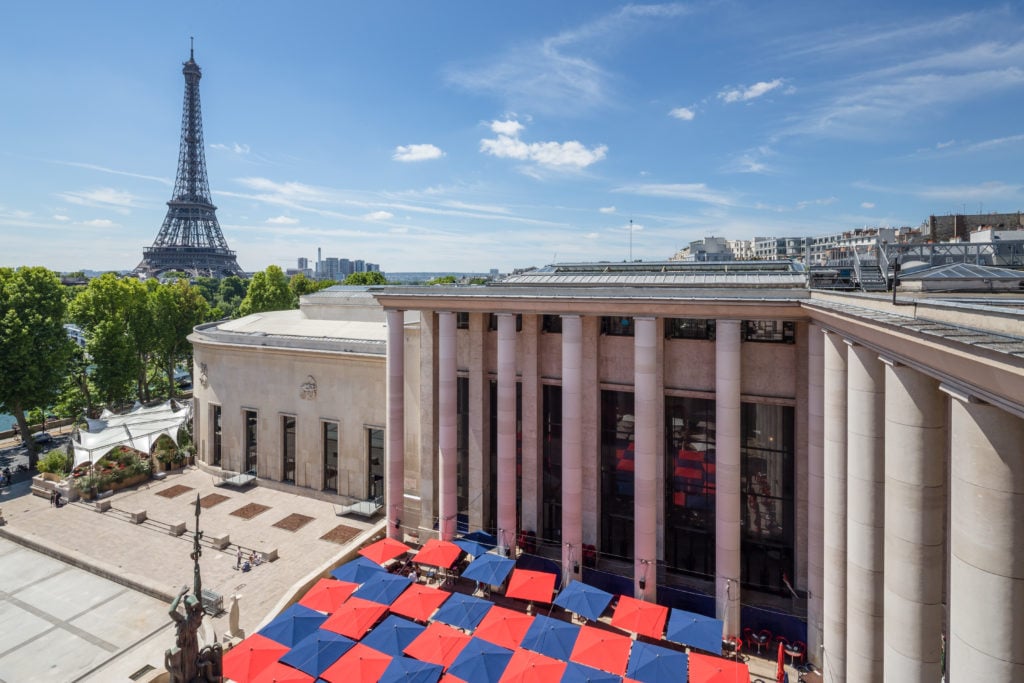
The Palais de Tokyo in Paris. Photo: Florent Michel / 11h45.
This residency, created by Ange Leccia, hosts young international artists sponsored by a Palais de Tokyo curator for an eight-month period from November to June. With a focus on the emerging contemporary art scene, the prestigious residency offers a monthly grant of €1,000, a studio at the Cité Internationale des Arts in Paris, access to Palais de Tokyo workspaces, and payment of all program-related expenses including research, travel, and production costs.
One of the most renowned international programs in the world, DAAD offers 20 residencies in visual arts, literature, music, and film. A jury nominates visual artists for invitation, and artists in other fields can apply for consideration. With stays lasting around a year (six months for filmmakers), travel expenses and health care are covered, and monthly grant installments are offered for living expenses and rent. Plus, artists are offered a free course in German.
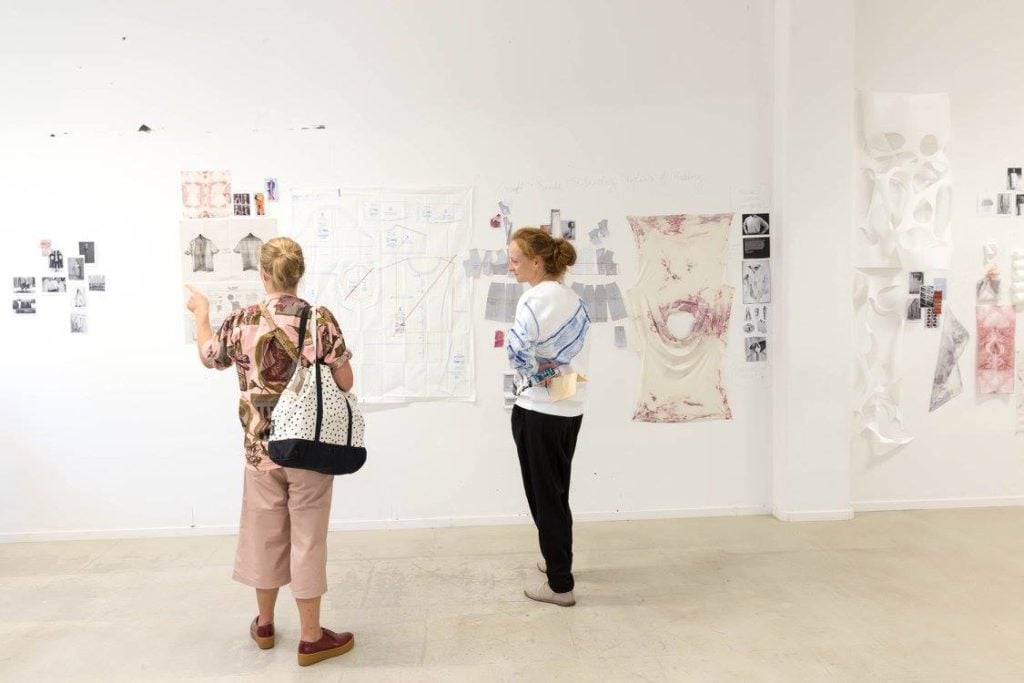
Iaspis Open House 190916: Natsai Audrey Chieza, artist in residence, Stockholm.
Photo Jean-Baptiste Béranger, courtesy Iaspis via Facebook.
The International Artists Studio Program in Stockholm is an exchange program financed by the Swedish government. Residents can work at one of the 12 studios in Sweden, or, for artists based in the country, a number of studios abroad. The studios are advertised once a year and the residencies run for six months (April to September, and October to March). Applicants can apply for one- to five-year working grants that range from 100,000-133,000 SEK (€10,500-14,000).
The Best for Emerging Artists Looking to Up Their Game
These are probably the ones with the least appealing economic conditions (at best, expenses and accommodation are covered)—but nobody said that being a cool emerging artist was easy, or lucrative.
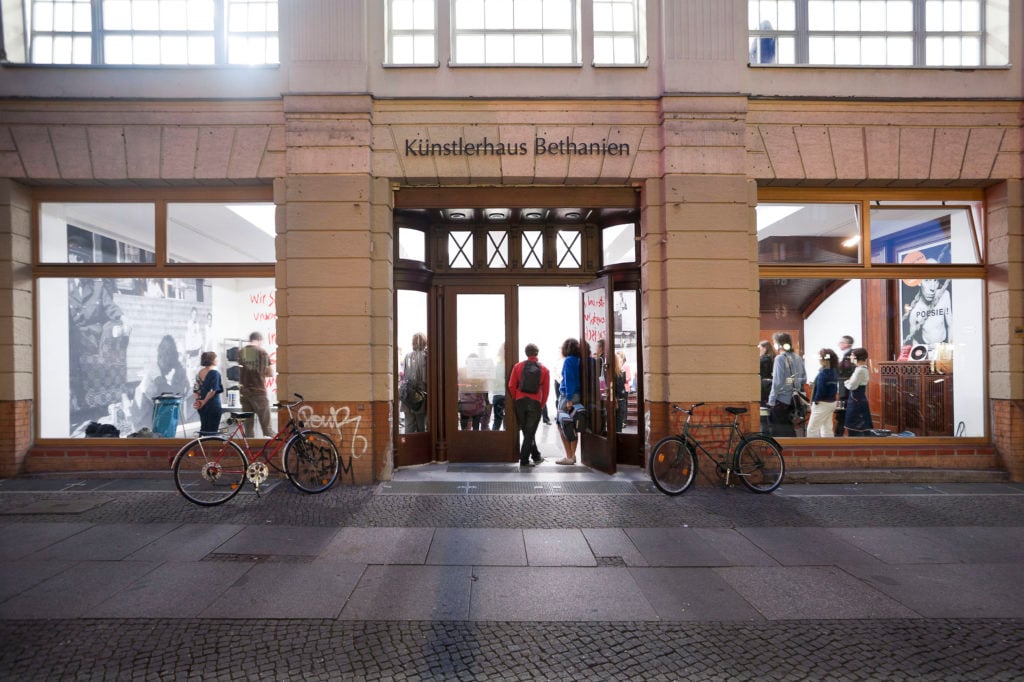
Entrance showroom at Kottbusser Straße 10, 2011. Photo: © Georg Schroeder / Künstlerhaus Bethanien
This Berlin residency is a veritable rite of passage for emerging artists. Many, in fact, stay on in the city after their year at Bethanien. Costs are covered by international bursaries, which include a monthly grant towards living costs for the duration of the artists’ stay (the specific quantity depends on the funder and length of stay). The grant also covers studio rental, a lump sum for materials, and the presentation of a final project in the Künstlerhaus Bethanien galleries.
The south London institution programs up to 16 residencies each year, inviting international emerging artists to live and work in London for three months. Residents are selected through open calls, and receive 24-hour access to a studio at Gasworks; a single room within Gasworks Residencies House; basic living expenses and transport in London; and travel expenses.
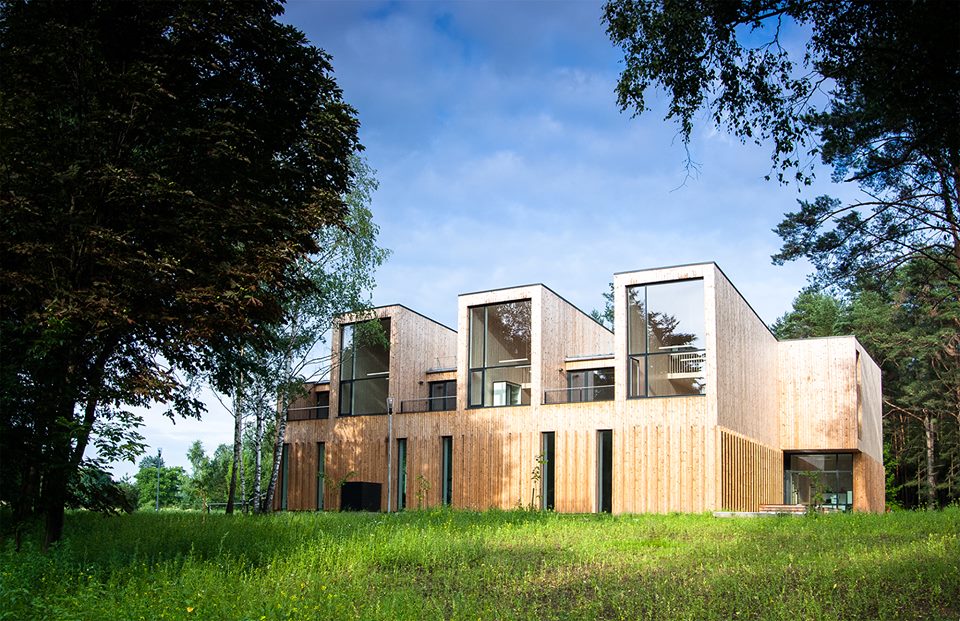
Rupert. Photo: Gražvidas Balčius & Pixelete, courtesy Rupert.
This ultra-modern art center in Lithuania has become a pilgrimage site for artists, curators, and writers since it launched in 2013, despite their residencies not being particularly well endowed. Residencies there actually cost money: €450 a month for studio rent, utilities, administrative support, and two studio visits. (You could get lucky, though: half of the residencies actually are free thanks to the support of Lithuanian Council for Culture and other grants.)
Turin is becoming a hub for emerging artists in Italy, and this residency, which lasts six to eight weeks, is the perfect introduction to life in the cradle of Arte Povera. Residents get a fellowship of €5,500 for the whole stay, which covers a daily allowance, accommodation, studio rent at Cripta747, and production costs.
The art scene in the port city in the south of France is decidedly thriving: a growing artistic community, sun, beaches, and its very own boutique art fair, Art-O-Rama, are but a few of the perks for young artists looking for a stint there. The three-month residencies offer artists a room in an apartment in the city center, a studio, a production grant of €1,000, technical support, assistance in the search of materials, techniques, partnerships, and studio visits for professionals.

Wiels Contemporary Art Center in Brussels. Photo Marc Wathieu, courtesy Wikimedia Commons.
Brussels is becoming one of the hottest artist destinations in Europe, and it’s easy to see why: the city boasts cheap rents, a convivial artist community, and a bustling art scene made of exciting institutions, galleries, nonprofits, and art fairs. WIELS is one of the most interesting institutions in town, and its year-long residency is proving a hotbed for emerging art. WIELS offers its residents an individual work-space (of 45 square meters) and a context designed to foster exchange with the artistic and cultural life of Brussels.
The Holy Grail of Young Artists: The Netherlands
Few countries match the Netherlands when it comes to funding for the visual arts. In fact, some of the most generous and most prestigious residency programs are based there, making them worthy of their own dedicated section all by themselves.
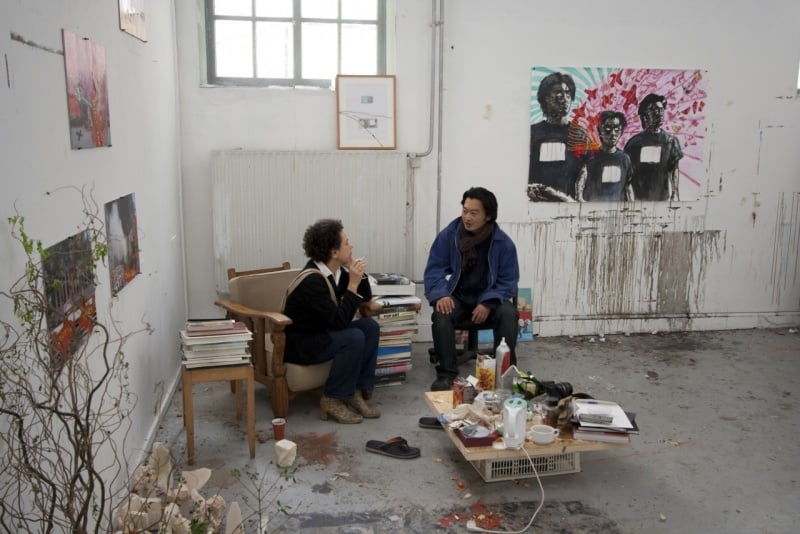
Artists in conversation at the Rijksakademie studios. Courtesy Rijksakademie.
The Rijksakademie offers residencies to around 50 artists, with a duration of one year, with the possibility of a year extension. Residents benefit from a studio, a work budget of €1,500, and a stipend of €12,200, plus infrastructure for research and production.
De Ateliers offers working periods of two years, with a yearly stipend of €13,655 and a private studio. The tutorial fee for 2017-2018 is €3,200, which is deducted from the stipend.

The Jan van Eyck Academie. Courtesy Jan van Eyck Academie via Facebook.
This post-academic institute offers 35 to 40 residencies per year, lasting between six and twelve months. Residents receive a monthly stipend of €900, from which rent and living costs are deducted (rooms cost about €350-500 a month). The enrollment fee at the Van Eyck amounts to €2,750 annually. Each participant gets a studio, an individual production budget of €2,000 per year, and advice from experienced artists, designers, curators, and art critics, who make regular studio visits.
The Unusual

The Diogene tram. Photo courtesy www.progettodiogene.eu
This residency offers approximately two-month stays in Turin where the artists live and work inside an actual tram. Residents are provided with a research grant of €6,000, mentoring from the artists of the Diogene group (“an artistic self-identity group of people working together to create a place for reflecting and exchanging ideas concerning the issues and means of contemporary art practice”), and the opportunity to work with students at local schools.
There’s little information on the process of this itinerant residency except that a resident artist hosts another and, in an intense two-day experience, they walk together, usually from one city to another, sharing ideas. The list of recent Caribic residents is impressive, including Amalia Ulman, Jeremy Shaw, and Paul Simon Richards.
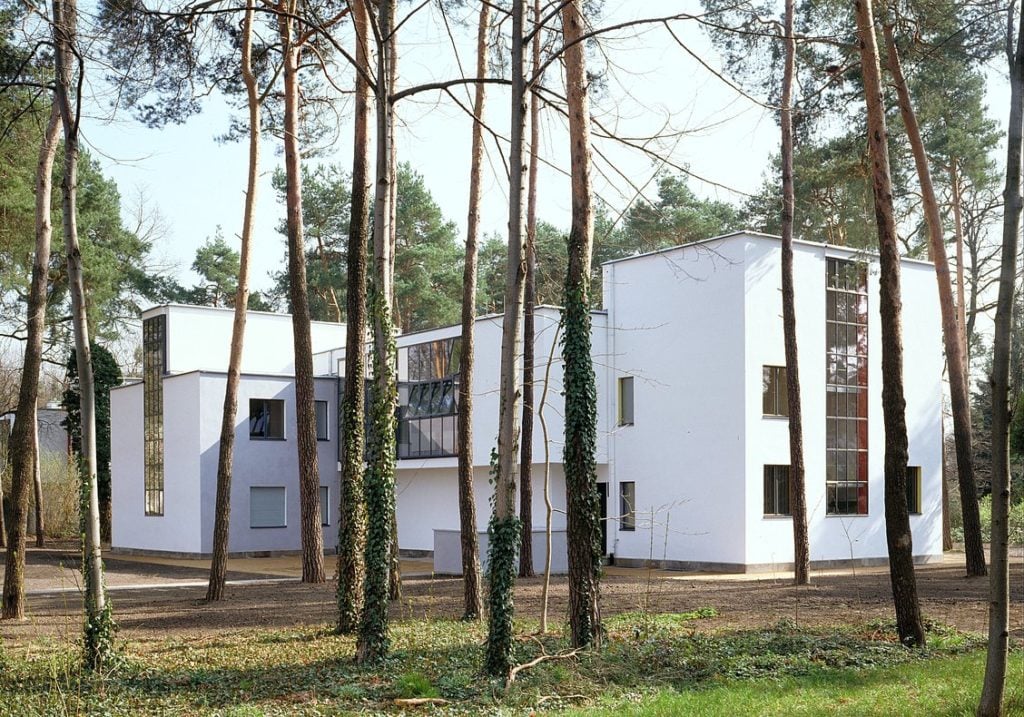
The Masters’ Houses in Dessau. Image courtesy Bauhaus Dessau.
In 2016, the UNESCO World Heritage Site was revived by the Bauhaus Dessau Foundation for their three-month residencies at the iconic Masters’ Houses. These three semi-detached houses were popular with artist collectives in the 1920s, and have hosted the likes of Walter Gropius and Wassily Kandinsky. Residents are offered a living and work space in the Muche/Schlemmer House, a monthly allowance of €1,200, and final presentations of their work in the Gropius House.
SKLAD residents can support the regional artistic scene of Abkhasia, a little-known and only partially recognized state to the northwest of Georgia. The program is designed around a year-long theme and up to six residents can stay for at least two weeks in the Black Sea coastal city of Sokhumi. It offers accommodation, modest individual budgets for materials, and a 150 square-meter studio/exhibition space, in which residents are expected to present work at the end of their stay.
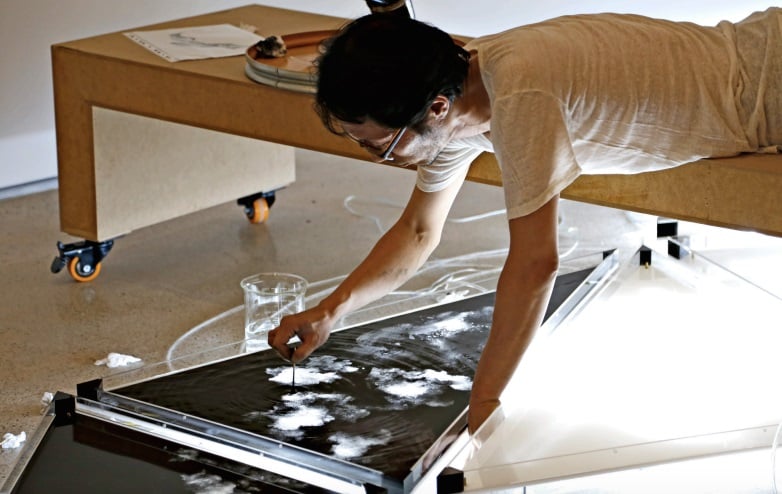
COLLIDE International Artist 2016, Yunchul Kim. Image courtesy Arts at CERN via Facebook.
This unique residency seeks to develop expert knowledge in the arts through a connection with a fundamental science. The program offers a fully-funded residency with two months spent at the European Organization for Nuclear Research (CERN) in Geneva, and one month at the Foundation for Art and Creative Technology (FACT) in Liverpool, as well as a prize of CHF 15,000 (€13,000).
Follow artnet News on Facebook:
Want to stay ahead of the art world? Subscribe to our newsletter to get the breaking news, eye-opening interviews, and incisive critical takes that drive the conversation forward.

